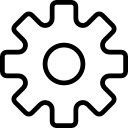






















Descrivere gli elementi chiave di una soluzione di data warehousing
Descrivere le principali considerazioni di hardware per la costruzione di un data warehouse
Implementare un disegno logico per un data warehouse
Implementare una progettazione fisica di un data warehouse
Creare indici columnstore
Implementare un data warehouse Azure SQL
Descrivere le caratteristiche principali di SSIS
Implementare un flusso di dati utilizzando SSIS
Implementare flusso di controllo, utilizzando i compiti e vincoli di precedenza
Creare pacchetti dinamici che includono variabili e parametri
Pacchetti di debug SSIS
Descrivere le considerazioni per implementare una soluzione ETL
Implementare Data Services di qualità
Implementare un modello di Master Data Services
Descrivere come è possibile utilizzare componenti personalizzati per estendere SSIS
Distribuire progetti SSIS
Descrivere la BI e gli scenari comuni di BI
Almeno 2 anni di esperienza di lavoro con i database relazionali, ad esempio:Progettazione di un database normalizzato.Creazione di tabelle e relazioni.Interrogazione con Transact-SQL.
Esposizione ai costrutti di programmazione di base (ad esempio, looping e branching).
E' auspicabile la consapevolezza delle priorità di business chiave come entrate, redditività e contabilità finanziaria.
Module 1: Introduction to Data Warehousing
Overview of Data Warehousing
Considerations for a Data Warehouse Solution
Lab : Exploring a Data Warehouse Solution
After completing this module, you will be able to:
Describe the key elements of a data warehousing solution
Describe the key considerations for a data warehousing solution
Module 2: Planning Data Warehouse Infrastructure
Considerations for Building a Data Warehouse
Data Warehouse Reference Architectures and Appliances
Lab : Planning Data Warehouse Infrastructure
After completing this module, you will be able to:
Describe the main hardware considerations for building a data warehouse
Explain how to use reference architectures and data warehouse appliances to create a data warehouse
Module 3: Designing and Implementing a Data Warehouse
Logical Design for a Data Warehouse
Physical Design for a Data Warehouse
Lab : Implementing a Data Warehouse Schema
After completing this module, you will be able to:
Implement a logical design for a data warehouse
Implement a physical design for a data warehouse
Module 4: Columnstore Indexes
Introduction to Columnstore Indexes
Creating Columnstore Indexes
Working with Columnstore Indexes
Lab : Using Columnstore Indexes
After completing this module, you will be able to:
Create Columnstore indexes
Work with Columnstore Indexes
Module 5: Implementing an Azure SQL Data Warehouse
Advantages of Azure SQL Data Warehouse
Implementing an Azure SQL Data Warehouse
Developing an Azure SQL Data Warehouse
Migrating to an Azure SQ Data Warehouse
Lab : Implementing an Azure SQL Data Warehouse
After completing this module, you will be able to:
Describe the advantages of Azure SQL Data Warehouse
Implement an Azure SQL Data Warehouse
Describe the considerations for developing an Azure SQL Data Warehouse
Plan for migrating to Azure SQL Data Warehouse
Module 6: Creating an ETL Solution
Introduction to ETL with SSIS
Exploring Source Data
Implementing Data Flow
Lab : Implementing Data Flow in an SSIS Package
After completing this module, you will be able to:
Describe ETL with SSIS
Explore Source Data
Implement a Data Flow
Module 7: Implementing Control Flow in an SSIS Package
Introduction to Control Flow
Creating Dynamic Packages
Using Containers
Lab : Implementing Control Flow in an SSIS Package
Lab : Using Transactions and Checkpoints
After completing this module, you will be able to:
Describe control flow
Create dynamic packages
Use containers
Module 8: Debugging and Troubleshooting SSIS Packages
Debugging an SSIS Package
Logging SSIS Package Events
Handling Errors in an SSIS Package
Lab : Debugging and Troubleshooting an SSIS Package
After completing this module, you will be able to:
Debug an SSIS package
Log SSIS package events
Handle errors in an SSIS package
Module 9: Implementing an Incremental ETL Process
Introduction to Incremental ETL
Extracting Modified Data
Temporal Tables
Lab : Extracting Modified Data
Lab : Loading Incremental Changes
After completing this module, you will be able to:
Describe incremental ETL
Extract modified data
Describe temporal tables
Module 10: Enforcing Data Quality
Introduction to Data Quality
Using Data Quality Services to Cleanse Data
Using Data Quality Services to Match Data
Lab : Cleansing Data
Lab : De-duplicating Data
After completing this module, you will be able to:
Describe data quality services
Cleanse data using data quality services
Match data using data quality services
De-duplicate data using data quality services
Module 11: Using Master Data Services
Master Data Services Concepts
Implementing a Master Data Services Model
Managing Master Data
Creating a Master Data Hub
Lab : Implementing Master Data Services
After completing this module, you will be able to:
Describe the key concepts of master data services
Implement a master data service model
Manage master data
Create a master data hub
Module 12: Extending SQL Server Integration Services (SSIS)
Using Custom Components in SSIS
Using Scripting in SSIS
Lab : Using Scripts and Custom Components
After completing this module, you will be able to:
Use custom components in SSIS
Use scripting in SSIS
Module 13: Deploying and Configuring SSIS Packages
Overview of SSIS Deployment
Deploying SSIS Projects
Planning SSIS Package Execution
Lab : Deploying and Configuring SSIS Packages
After completing this module, you will be able to:
Describe an SSIS deployment
Deploy an SSIS package
Plan SSIS package execution
Module 14: Consuming Data in a Data Warehouse
Introduction to Business Intelligence
Introduction to Reporting
An Introduction to Data Analysis
Analyzing Data with Azure SQL Data Warehouse
Lab : Using Business Intelligence Tools
After completing this module, you will be able to:
Describe at a high level business intelligence
Show an understanding of reporting
Show an understanding of data analysis
Analyze data with Azure SQL data warehouse